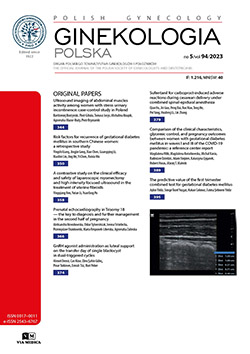
Photo from archive.org
OBJECTIVES The aim of the study was to assess the level of implementation of recommendations of the Ministry of Health regarding infectious disease screening during pregnancy. MATERIAL AND METHODS The… Click to show full abstract
OBJECTIVES The aim of the study was to assess the level of implementation of recommendations of the Ministry of Health regarding infectious disease screening during pregnancy. MATERIAL AND METHODS The study included 477 patients who were admitted to the delivery room between December 2015 and February 2016. Data on screening test results were collected based on medical records covering the period before the admission. RESULTS The Human Immunodeficiency Virus (HIV) screening was conducted in 410 (86%). 460 (96%) of patients were screened for Hepatitis B Virus (HBV) and 427 (89.5%) for Hepatitis C Virus (HCV). Syphilis screening covered 465 (97.5%) of patients. Immunoglobulin M (IgM) titer against Rubella Virus (RV) was assessed in 218 (45%) patients and immunoglobulin G (IgG) in 319 (66.9%). Screening for Toxoplasma gondii based on assessment of IgM titer was conducted in 440 (92%) patients while IgG titter was assessed in 413 (86.6%). 343 (71.9%) patients had obtained vaginal swabs for Group B Streptococci (GBS) while the anal swabs were taken only from 268 (56.2%) patients. CONCLUSIONS Coverage of screening for syphilis and HBV was similar to the countries with highest prevalence of conducting such screening, on the other hand RV screening place as among countries with lowest prevalence. There is an increasing trend in conducting HIV screening. Screening for HCV and toxoplasmosis is at satisfactory level and Poland is one of a few European countries offering such screening. The screening for GBS is insufficient which result in excessive use of intrapartum antibiotic prophylaxis.
Journal Title: Ginekologia polska
Year Published: 2017
Link to full text (if available)
Share on Social Media: Sign Up to like & get
recommendations!